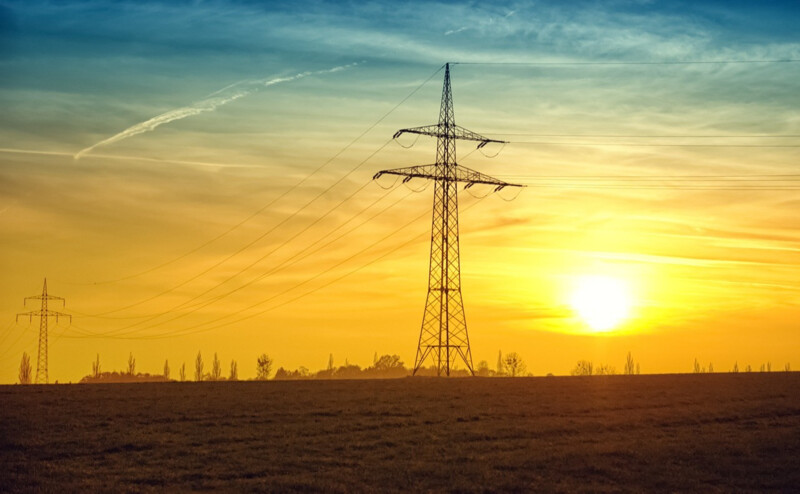Après avoir atteint un niveau très haut à la fin du mois d’août, les prix du gaz et de l’électricité diminuent de nouveau en Europe. Ce repli du prix de l'énergie observé depuis quelques semaines est lié à des températures très clémentes pour la saison, ainsi qu’à une baisse de la consommation.
Baisse de la consommation d’électricité de 3 à 4 % en septembre
Depuis quelques semaines, les prix du gaz et de l’électricité sont en baisse en Europe. Une tendance qui devrait se poursuivre en octobre avec un recul des prix de 60 % sur le mois, d’après les estimations de la société de veille économique et de recherche énergétique Rystad Energy.
Ce repli est dû en premier lieu à une baisse de la consommation, elle-même liée à une météo particulièrement clémente et à la mise en œuvre des premières mesures de sobriété énergétique. Par ailleurs, les éoliennes situées au nord du continent bénéficient de vents favorables pour une production accrue.
Selon les chiffres de RTE, le gestionnaire du réseau de transport électrique, la consommation d’électricité a diminué de 3 à 4 % en septembre par rapport au 1er semestre 2022, et de 5 % par rapport à la période pré-Covid.
Le secteur de l’industrie est celui qui a le plus réduit sa consommation d’électricité. Pourtant, la baisse de 8 à 9 % observée sur les grands sites industriels est moins due aux mesures de sobriété qu’au ralentissement économique. Face à la hausse des prix de l’énergie, certaines usines ont en effet ralenti leur activité, voire l’ont entièrement stoppée.
Dans les secteurs tertiaire et résidentiel, les mesures de sobriété semblent porter leurs fruits : appliquée dès le mois de septembre, la réduction du chauffage, de l’éclairage public et de l’eau chaude a entraîné une baisse de la consommation électrique.
Premiers partenaires d'#EcoWatt, les grandes entreprises françaises s'associent au mouvement pour réduire le risque de coupure d'électricité cet hiver, en relayant le signal vers leurs publics ou en optimisant leur consommation ⚡️
— RTE (@rte_france) October 14, 2022
Pas encore partenaire ? Rejoignez le mouvement ! pic.twitter.com/qtLuCx5Q7U
Des variations de prix inégales selon les marchés
La production des éoliennes et les conditions climatiques influent particulièrement sur le marché à court terme. En France, les prix spots – à savoir les prix établis pour une livraison immédiate –, ont atteint leur niveau le plus bas depuis des mois, avec une fourchette allant de 150 à 200 euros le MWh.
Contrairement au marché spot qui se concentre sur les achats et ventes d’électricité la veille pour le lendemain, le marché à terme de l’électricité est composé des achats et ventes pour une période allant des jours aux années prochaines.
Le repli constaté sur le marché spot ne touche pas le marché à terme, où les prix restent à un niveau très haut. Ils atteignent, pour les contrats annuels qui seront livrés début 2023, 400 euros le MWh en Allemagne et 550 euros en France.
Sur le marché spot du gaz, la baisse des prix est encore plus nette. Ils ont été divisés par 5 par rapport à début septembre, et s’établissent actuellement à environ 60 euros le MWh. Le repli est également notable sur le marché à terme, avec une moyenne de 117 euros pour novembre.
La baisse des prix du gaz s’explique elle aussi par un recul de la demande en raison de la météo, et un niveau de stockage élevé. En 2021, sur la même période, les réserves de gaz atteignaient en Europe une moyenne de 77 %, contre 92 % à l’heure actuelle.
Pour compenser la baisse des livraisons de gaz russe, l’Europe s’est tournée vers le gaz naturel liquéfié (GNL) et a signé un accord avec les États-Unis afin de sécuriser son accès à cette ressource. L’Europe se fournit aussi en GNL auprès du Qatar, de l’Algérie, de la Norvège, de l’Égypte, du Nigéria, d’Israël ou encore de l’Australie, ce qui lui permet de ne pas dépendre uniquement de la Russie.
Or, plus la dépendance européenne au gaz russe sera limitée, plus les prix diminueront, ce qui suppose néanmoins une entente entre les différents pays membres quant aux sources d’approvisionnement.
